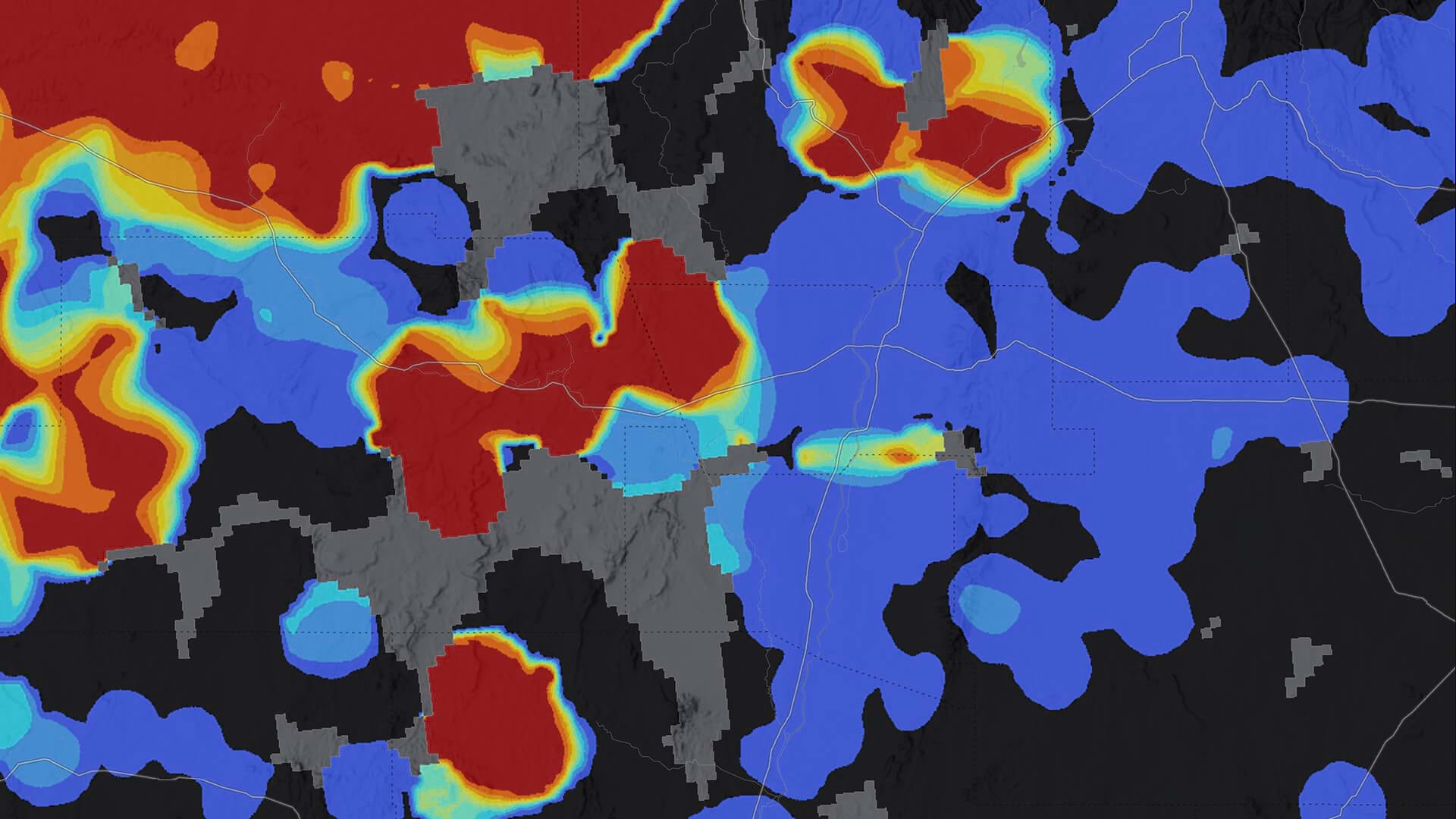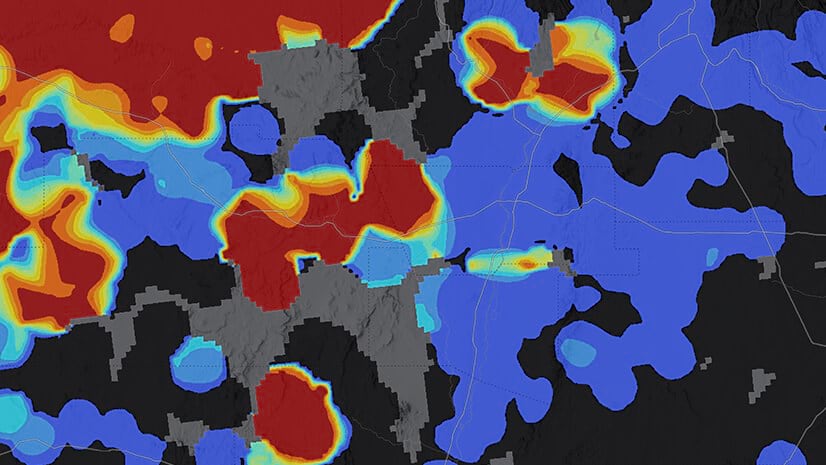Ineffective collaboration is a significant contributor to business failures, a recent survey found. And while most business executives understand this intuitively, the knowledge doesn’t make collaboration any easier to achieve.
The profusion of data across the enterprise has made coordination even more complex, as siloed departments must share information with partners inside and outside the organization.
Talk to executives who have successfully synchronized their business, and you’ll hear a common refrain: Organizations with a shared source of truth are faster, more effective, and better at controlling costs.
Business leaders are increasingly embracing maps as a source of truth that brings all parties onto the same page. Geographic information system (GIS) technology enables all stakeholders to share important information through a single platform.
The experience of Belfast-based broadband provider Fibrus reveals how GIS technology enhances collaboration. After winning a bid to bring internet connectivity to rural regions of Northern Ireland, Fibrus needed to coordinate a major infrastructure build-out with hundreds of employees, contractors, and subcontractors, while also reporting accurate information to investors and government leaders. GIS technology became a hub for information and collaboration.
“Our full C-suite has logins to GIS,” says Riain Garcia, senior manager of GIS at Fibrus. “Our investors have logins and even the government agencies we work with. . . . From the guy on the ground with the shovel to the highest employee, [they] all have logins, and they are being used.”
GIS helped Fibrus save nearly US$6 million and reduce wasted time by 500 hours a week. The details of Fibrus’s case are unique, but its principles can be adopted by any C-suite executive aiming to boost cooperation throughout an organization, regardless of industry.
With the unifying force of maps and dashboards, Fibrus increased accountability and transparency with contractors, communicated effectively throughout the project, and empowered stakeholders to make effective decisions.
Collaboration Lesson #1: Information Transparency Leads to Accountability
It’s a familiar scenario: An email goes out to a dozen recipients requesting information or a decision. If responsibility isn’t clearly demarcated, the result is often confusion and wasted time instead of collaboration.
To deliver broadband connections to 85,000 homes, Fibrus worked with over 1,000 field operatives—contractors who dug trenches, strung cables, pitched poles, and more. GIS technology became the main communication channel for project managers and designers to exchange information about changes in real time.
If a pole needed to be moved during construction, design partners reviewed and approved the change from a GIS dashboard, eliminating the need for back-and-forth messaging.
“It’s just a waste of time trying to find the right person to talk to or where particular information is that you’re looking for,” says Cade Wilkinson, head of planning at Fibrus. “That’s where I’d say, across our business, the majority of our time savings has come from.”
Transparency also played a role in streamlining billing for contractors and subcontractors. In the past, Fibrus managers might spend hours puzzling over what work had been completed when, and what to pay for it. After the company asked contractors to record all progress in GIS, delays and discord declined significantly. Both Fibrus managers and contractors could see on a map how many meters of cable had been installed that day, for instance.
The data delivered follow-on benefits, informing accurate estimates for later projects and ways of managing resources more efficiently.
With a smart map acting as a transparent project record, stakeholders avoided the confusion that can drain productivity and drive up costs.
“If it’s not in GIS,” Wilkinson says, “we’re not trusting it.”

We had to do things more efficiently. We knew that the timescales on the program were never going to be achievable unless we brought in something smarter.
Collaboration Lesson #2: Invite All Stakeholders In
Business leaders who think of all stakeholders as collaborators, incorporating their input into project planning and delivery, can take service to the next level.
As Fibrus charted a path to deliver high-speed internet to tens of thousands of homes via fiber-optic cables, company planners consulted GIS to gain awareness of the property owners who would be affected by new broadband infrastructure.
Using location software, planners recorded important information, such as a resident’s preference for an underground installation as opposed to poles. With that data stored in a central project hub, Fibrus gave customers a voice from the start of construction through the operations phase.
Once a contract was signed allowing construction to commence on a parcel of land, the agreement was photographed and uploaded to GIS. Contractors saw the property’s color change on the digital map, signaling that work could begin. Site managers and others used the map to navigate to work sites and find contact information for landowners.
“It provides visibility to everybody,” Wilkinson says.
Status updates also supplied context to investors and government sponsors like Building Digital UK and the Department for the Economy.
With GIS as a hub for data from the start, companies can avoid the complications and delays caused by information gaps.
Collaboration Lesson #3: Shared Dashboards Empower Action
Collaboration efforts are often hobbled by siloed information or departments that can’t communicate effectively because they rely on different technologies. Fibrus showed that GIS can empower all stakeholders by making otherwise disparate data more accessible.
The company’s GIS dashboards allowed project leaders to assess at a glance the location of poles or the length of cable installed in certain locations. Compliance teams audited the network by reviewing data that site supervisors uploaded, while legal advisers pinpointed the location of outstanding permits.
The dashboard also informed strategic decisions at the company’s most senior levels. When a Fibrus team created a list of towns where the company might expand its service, Wilkinson converted the spreadsheet into a map. The geographic view was a reality check, revealing that certain towns couldn’t be reached cost-effectively.
With the broadband network now operational, GIS technology powers a customer query portal that has helped resolve over 1,000 cases in less than a year. When a customer reports an issue like severed cables or a tilting pole, a call center representative logs the query in GIS and sees which regional team can handle it most efficiently. An automated email is sent to that department.
Once an issue is resolved, another automated email reaches call center managers who can review the update on a map and notify the customer that the issue has been resolved. Without the efficiency introduced by GIS, such cases would likely have taken far longer to settle.

We have to follow very specific checks and balances. Really, the only way to keep track of that is within the polygon on the map.
A Case Study in Collaboration
When it comes to improving collaboration, a centralized system for storing, sharing, and analyzing information can overcome a host of business challenges. In fields ranging from corporate security to farming, GIS drives internal and external cooperation by unifying data and providing insights to multiple decision-makers. Executives are increasingly coming to see collaboration as essential to achieving efficiency and productivity—and GIS as a key technology that powers it.
For more on how Fibrus tranformed its processes, visit this case study.












